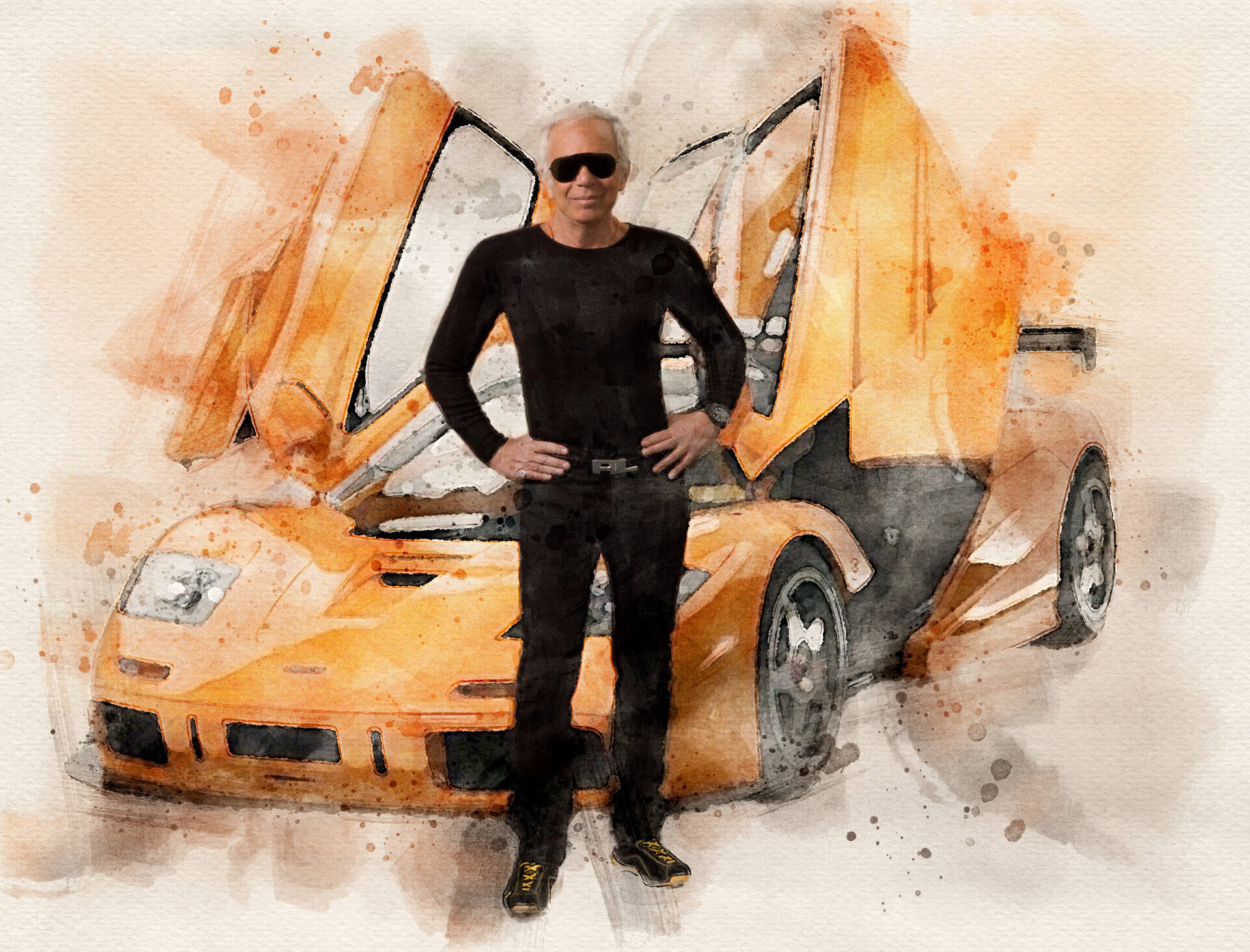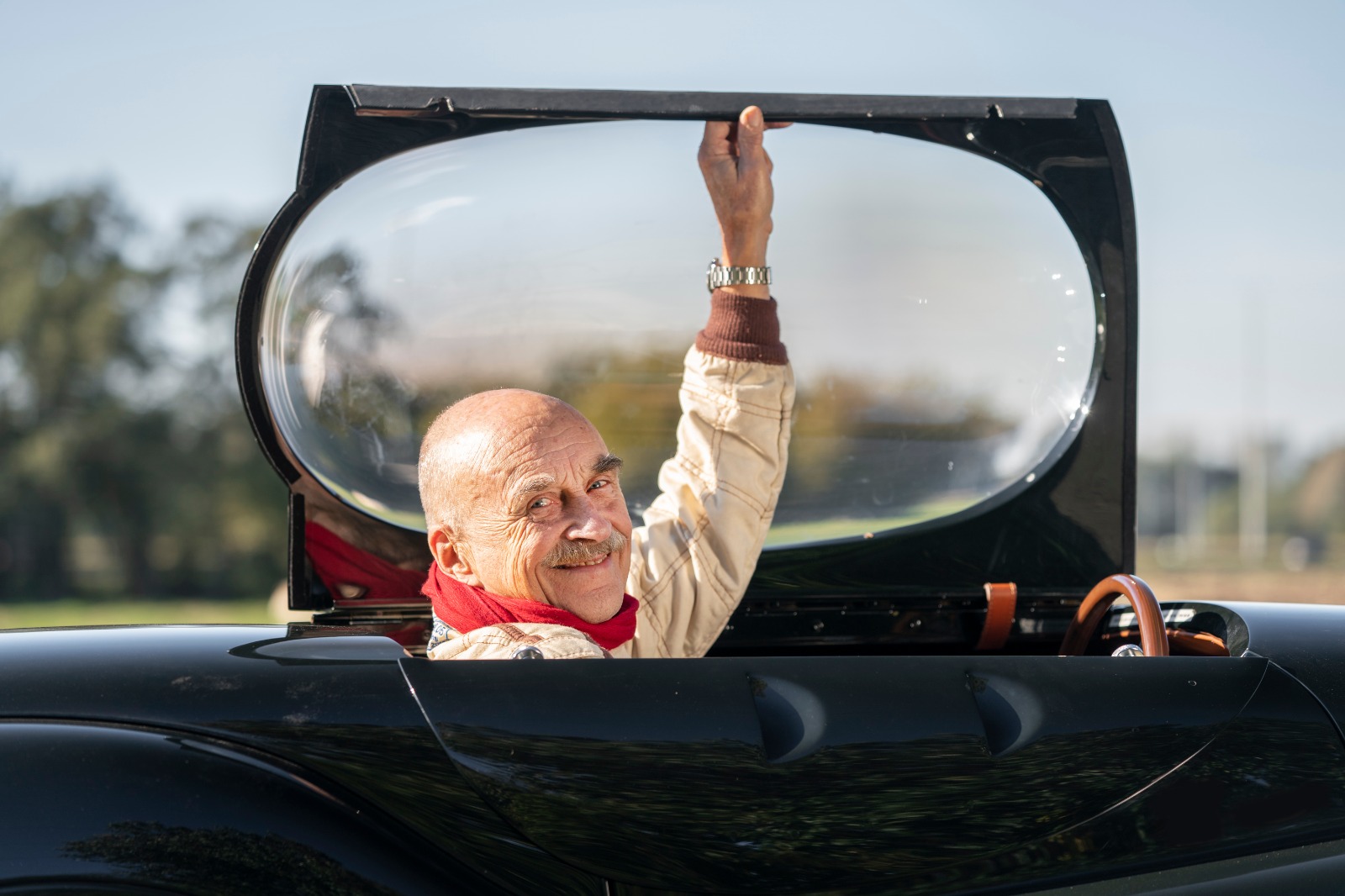"It's a shark tank out there."
13 September 2023 4 min read 4 images

Classic Car collector Kurt Engelhorn and his advisor Florian Seidl on the passion of collecting, market developments, the future of St. Moritz Automobilwoche and future business opportunities in Roarington. An exclusive interview in three parts.
Part 2: How a collection is managed, prices are created and markets develop.

Mr. Engelhorn: What does all this mean for the collector?
Engelhorn: For the collector, the simple original enthusiasm for classic cars is the motive of driving them. Then immediately comes the second: If you own such cars, they have to be used. As a collector, I have to be committed to driving the cars. I should engage in events all over the world, racing and moving the historic vehicles as smartly as possible in everyday life. For all this, the collector must expose himself.
You were always aware of that?
Engelhorn: That was a very clear thing. I drove my first race on the Klausen Pass more than twenty years ago, and a few years later I got my racing license in England and drove circuit races. That was and is an essential part of our universe.
What role does the advisor play here?
Engelhorn: I felt I needed a consultant to create discipline because there was so much material to manage optimally and I am active in many economic areas: Mechanics, restorations, conversions, the purchase and sale of objects. So it's important not to lose sight of the business optics and to make sure that once budgets are established, they are met. The restorers and the workshops, of course always say: If you want the best, we'll do the best. And that's the right thing to do. But it has to be done under iron-hard control. That's when I needed a professional who could really do it and was after the job, so that we could get the best result for the best money. Then, of course, I have to be disciplined myself. And all the people around me who are involved also need discipline.
"It is important not to lose sight of the business optics and to ensure that budgets, once created, are also adhered to. The restorers, the workshops, of course always say: If you want the best, we'll do the best. And that's the right thing to do. But it has to be done under iron-hard control." Kurt Engelhorn
How are you sure you have found the right consultant?
Engelhorn: A consultant doesn't have to have the same character as myself, otherwise the whole thing won't work, of course. So I needed someone like Florian Seidl. We are two people who have different demands and approaches. But it has to fit together somewhere. We have to strive for the same goal together.
Agreed, Mr. Seidl?
Florian Seidl: Kurt Engelhorn is a prime example in this regard, because he respects and examines opinions that differ from his own. The formation of opinions between us takes place in a fruitful and also intellectually high level discourse. The collecting activity is a journey that a collector embarks on only when he has gotten away from wanting to own something at any price.
How can you be sure you’re giving the right advice?
Seidl: It has to be an interplay in which many elements flow together: Personal infatuation and wishes of the customer, professional experience, market knowledge backed up with know-how. Everything is always in flux. For example, in the past twenty years, the fiscal demands on collectors and collections have also increased enormously. This has become an extremely important field. If you are a wealthy collector in the market today, there are basically certain rules that have to be observed.

"Thus, over the past twenty years, the fiscal demands on collectors and collections have also increased enormously. This has become an extremely important field." Florian Seidl
Namely?
Seidl: It's a shark tank out there. The trade in itself and the auction houses have made an incredible amount of money from the desirability of the objects. They often, but not always, work exclusively for the interest of the client, but focus on self-interest. At this point, a sound knowledge of the market is of blatant importance.
Isn't that obvious?
Seidl: You see: an auction house always makes its deal. The collector, however, in his ignorance of market forces, does not necessarily. If someone wants to sell a vehicle and an auction house offers a price, how does the collector know whether the offer for this particular vehicle is in line with the market? He only realizes that when he sees that the same auction house has a similar model in its brochure for twice the price. Who does not have the market knowledge, can hardly differentiate here or recognize pitfalls. This danger is always there. You have to be an insider to ensure that the result is right for the customer. It is therefore advisable to choose a consulting approach so that a costly learning curve can be avoided.
Is the racing activity the logical consequence of the activities as a collector?
Engelhorn: For my feeling, it was a logical progression since I already owned racing cars. I was already a little over 50 years old when I drove my first race at the Klausen Pass. At first, of course, I always drove at the back of the field. But the goal was to dedicate oneself to the cars, to expose oneself to them. In my eyes, that was mandatory. To learn to get along with it as harmoniously as possible. To get a feeling for the driving line, and through all this, perhaps to become a little faster than before. That was also a philosophical-mental experience for me, which I appreciate very much and will also miss when I will really be too old for it.
"The entry into historic racing was prescribed in my opinion. To learn to get along with this machine as harmoniously as possible. To get the feeling for the driving line, and through all this, perhaps to become a little faster. That was also a philosophical-mental experience for me." Kurt Engelhorn
Nevertheless, this is bad news for the historic automobile itself: every racing activity increases costs. The same applies to wear and tear. Not to mention when it comes to an accident.
Engelhorn: I always managed to get the car through the races unscathed - and there were always a few cars that broke down. Apart from the odd accident - a damaged gearbox or engine failure - thankfully nothing ever happened to me. Of course, racing activities cost extra money. There are the costly race preparations. The cars have to be in impeccable technical condition, and safety has to be guaranteed. All that may be expensive. But it helps the value of the vehicle if it is used and visible at races.

That basically increases the value?
Engelhorn: I think so, yes.
Seidl: Yes, absolutely. There is a dichotomy in historic racing. One is colleagues who drive cars in which only partial elements still correspond to the original. This can range from new engine components to completely new bodies. Then there is also the question of whether amateurs, semi-professionals or professionals are behind the wheel. This may be entertainment for spectators and organizers.
That's not the ultimate experience?
Seidl: Then there are those who move technical-historical equipment. That's the top class. If you only drive a replica, it may look like the original, but it's not original. The original takes place exclusively in the top segment, where it is primarily a matter of racing philosophy. That is then moving art.
CLASSIC CAR MATCHER



